Crișana
This articleneeds additional citations forverification.(December 2009) |

Crișana(Hungarian:Körösvidék,‹See Tfd›German:Kreischgebiet) is a geographical andhistorical regionin north-westernRomania,named after theCriș (Körös) Riverand its three tributaries: theCrișul Alb,Crișul Negru,andCrișul Repede.In Romania, the term is sometimes extended to include areas beyond the border, inHungary;in this interpretation, the region is bounded to the east by theApuseni Mountains,to the south by theMureș River,to the north by theSomeș River,and to the west by theTisza River,theRomanian-Hungarian bordercutting it in two.[1][2]However, in Hungary, the area between the Tisza River and the Romanian border is usually known asTiszántúl.

| History ofRomania |
|---|
 |
|
|
History
[edit]Ancient history
[edit]Inancient times,this area was settled byCelts,Dacians,Sarmatians,andGermanic peoples.In the first century BC, it was part of theDacian KingdomunderBurebista.
Middle Ages
[edit]
In theMiddle Ages,it was ruled by theHunnic Empire,theKingdom of the Gepids,theAvar Empire,theBulgarian Empireand theKingdom of Hungary.
Hungarian maps based on theGesta Hungarorumcall it Kazárország. According toSimon of Keza's 13th C.Gesta Hunnorum et Hungarorum,the same area was ruled (underZvataplugson ofMorout),[dubious–discuss]by Morout's grandsonMenumorout(Stallion of Morout) in the 10th century. Morout was aPrince of Polandwho had supposedly subduedBractariand ruled as Emperor of the Bulgars and Moravians.[3][4]Prince Morout occupied Crișana and the people that are calledCozarinhabited that land in reference to theCozlones.Prince Morout's son Zvataplug appears to have been the father of Prince Morout's grandson Menumorout who succeeded Zvataplug and wed his daughter toÁrpád's sonZoltán of Hungaryfather ofTaksony of Hungary.[5]
Jews living in the area transmitted a letter written about 960 CE to KingJoseph of the KhazarsbyHasdai ibn Shaprut.About the same time Ibrahim ibn Jacob says that Jews went from the same area toPraguefor business purposes. Nothing else is known concerning these Jews during the period of thegrand princes,except that they lived in the area and engaged in commerce there.[citation needed]
The largest city in the region,Oradea(Hungarian:Nagyvárad), was most probably established during the early years of Hungarian rule. It is first mentioned in 1113 under the name "Varadinum" in a diploma belonging toBenedictineZobor Abbey.The Romanian nameOradeaoriginates from the Hungarian nameVárad,meaning "fortified place". The city was one of the most important cultural centres of the medieval Hungarian state: two Hungarian kings,Ladislaus I(1077-1095) andSigismund(1387-1437) were buried there. After the canonization of Ladislaus I in 1192, his shrine at Várad became a Catholic pilgrimage site.
Modern History
[edit]After theBattle of Mohács(1526), the region became part of theEastern Hungarian Kingdom.In 1552, the Ottoman Empire occupied the southern part of Crișana and included it in the newly establishedTemeşvar Eyalet.According to theTreaty of Speyer (1570),the rest of Crișana became part of thePrincipality of Transylvania,a successor state of the Eastern Hungarian Kingdom. John Sigismund Zápolyaabdicated as King of Hungary and in return,Maximilian II of Habsburgrecognized John Sigismund's authority over the eastern territories of the Kingdom of Hungary. John Sigismund becameprinceps Transsylvaniae et partium regni Hungariae dominus– Prince of Transylvania and ofa part of the Kingdom of Hungary(Partium). Crișana was included in the Partium.
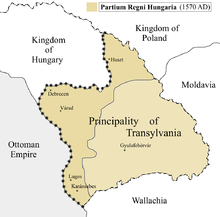
The OttomanVarat Eyaletthat was formed in the second half of the 17th century was centered on Crișana. Since the end of the 17th century, the whole region became part of the lands of theHabsburg monarchyand was administratively divided between theHabsburg Kingdom of Hungary,the HabsburgPrincipality of Transylvaniaand the HabsburgMilitary Frontier.
Following the abolition of theTheiß-Mureschsection of the Habsburg Military Frontier (in 1750) and the abolition of thePrincipality of Transylvaniain 1867, the whole area was included again into theKingdom of Hungary,which was then part of the dual monarchy ofAustria-Hungary.During Habsburg administration, Crișana did not, on the whole, have special status such as that ofTransylvaniaor theBanat;briefly, from 1850 to 1860, it was organized as theMilitary District of Großwardein.After disintegration of theAustro-Hungarian Empirein 1918, Crișana was divided betweenRomania(eastern part) andHungary(western part).
Geography
[edit]Romanian Crișana is located within thePannonian basinand bounded in Romania byMaramureșto the north,Transylvaniaproper to the east,Banatto the south, and Hungary to the west. The region consists of the current Romanian counties ofArad(most of it),Bihorand some parts ofSălaj,Satu Mare,parts ofMaramureș County(Codru, Chioar) andHunedoaracounties. Nowadays it is sometimes considered part of the historical regionTransylvania,although it did not fall fully within the boundaries of the historical principality.
Hungarian Körösvidék is covered by the areas ofHajdú-Bihar CountyandBékés County.The southern part of Crișana, near the Mureș River, was calledPomorišjeby theSerbs.
Cities
[edit]The most important cities are:
Gallery
[edit]-
Arad- Orthodox Cathedral
-
Arad- Ioan Slavici - Classic Theatre
-
Arad- Administration Palace
-
Oradea- The Ferdinand Square
-
Oradea- The Faculty of Medicine
-
Oradea- The Black Eagle Palace
-
Oradea- TheCrişul Repederiver
-
Salonta- Orthodox Church
-
Salonta- Arany Janos High School
-
Salonta- The central park
-
Wooden church inBrădet
-
Bekescsabatheater
-
Gyulacastle
See also
[edit]References
[edit]- ^Boia, Lucian (2001-01-01).Romania: Borderland of Europe.Reaktion Books.ISBN9781861891037.
- ^White, George W. (2000-01-01).Nationalism and Territory: Constructing Group Identity in Southeastern Europe.Rowman & Littlefield.ISBN9780847698097.
- ^Simonis De Keza Gesta Hungarorum,edited and translated by Laszlo Veszpremy and Frank Schaer with a study by Jeno Szucs. CEU Press, 1999. p. 75
- ^Steinhübel, Ján (2020-01-01).The Nitrian Principality: The Beginnings of Medieval Slovakia.Brill.ISBN9789004438637.
- ^Anonymous Notary of King Bela: The Deeds of the Hungarians,edited translated and anotated by Martyn Rady and László Veszprémy. CEU Press, 2010. p. 33.
External links
[edit]



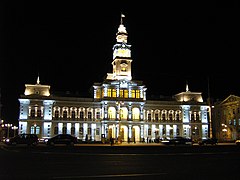
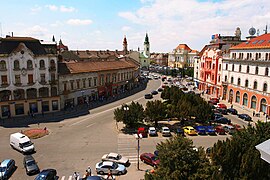


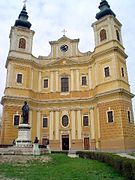


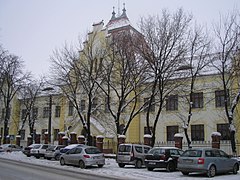
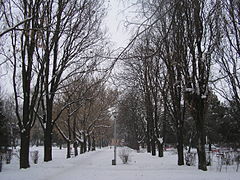
![Wooden church in Brădet [ro]](https://upload.wikimedia.org/wikipedia/commons/thumb/c/c1/Bradet.peste_sat.jpg/322px-Bradet.peste_sat.jpg)


